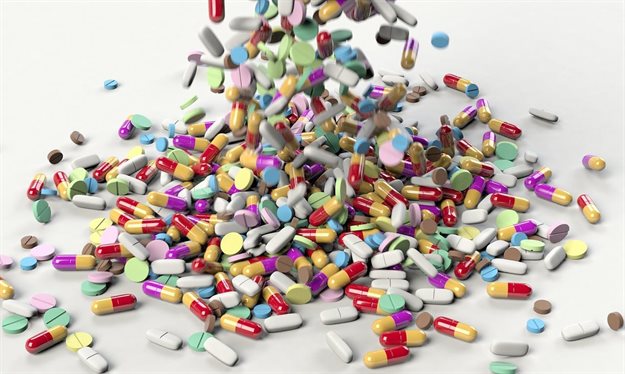Big Pharma emits more greenhouse gases than the automotive industry

Yet our recent study found the global pharmaceutical industry is not only a significant contributor to global warming, but it is also dirtier than the global automotive production sector.
It was a surprise to find how little attention researchers have paid to the industry’s greenhouse gas emissions. Only two other studies had some relevance: one looked at the environmental impact of the US healthcare system and the other at the pollution (mostly water) discharged by drug manufacturers.
Our study was the first to assess the carbon footprint of the pharma sector.
More polluting
More than 200 companies represent the global pharmaceutical market, yet only 25 consistently reported their direct and indirect greenhouse gas emissions in the past five years. Of those, only 15 reported their emissions since 2012.
One immediate and striking result is that the pharmaceutical sector is far from green. We assessed the sector’s emissions for each one million dollars of revenue in 2015. Larger businesses will always generate more emissions than smaller ones; in order to do a fair comparison, we evaluated emissions intensity.
We found it was 48.55 tonnes of CO2e (carbon dioxide equivalent) per million dollars. That’s about 55% greater than the automotive sector at 31.4 tonnes of CO2e/$M for that same year. We restricted our analysis to the direct emissions generated by the companies’ operations and to the indirect emissions generated by the electricity purchased by these companies from their respective utilities companies.
The total global emissions of the pharma sector amounts to about 52 megatonnes of CO2e in 2015, more than the 46.4 megatonnes of CO2e generated by the automotive sector in the same year. The value of the pharma market, however, is smaller than the automotive market. By our calculations, the pharma market is 28% smaller yet 13 per cent more polluting than the automotive sector.
Extreme variability
We also found emissions intensity varied greatly within the pharmaceutical sector. For example, the emissions intensity of Eli Lilly (77.3 tonnes of CO2e/$M) was 5.5 times greater than Roche (14 tonnes CO2e/$M) in 2015, and Procter & Gamble’s CO2 emissions were five times greater than Johnson & Johnson even though the two companies generated the same level of revenues and sell similar lines of products.
We found outliers too. The German company Bayer AG reported emissions of 9.7 megatonnes of CO2e and revenues of $51.4bn, yielding an emission intensity of 189 tonnes CO2e/$M. This intensity level is more than four times greater than the overall pharmaceutical sector.
In trying to explain this incredibly large deviation, we found that Bayer’s revenues derive from pharmaceutical products, medical equipment and agricultural commodities. While Bayer reports its financial revenues separately for each division, it lumps together the emissions from all the divisions. The company also reports and tracks its emission intensity in terms of tonnes of CO2e produced for each tonne of manufactured goods, whether fertiliser or aspirin, for example.
This level of opacity makes it not only impossible to assess the true environmental performance of these kind of companies. It also raises questions about the sincerity of these companies’ strategies and actions in reducing their contribution to climate change.

Climate compliance
We also estimated how much the pharmaceutical sector would have to reduce its emissions to comply with the reduction targets in the Paris Agreement.
We found that by 2025, the overall pharma sector would need to reduce its emissions intensity by about 59% from 2015 levels. While this is clearly a far cry from their current levels, it is interesting to note that some of the 15 largest companies are already operating at that level, namely Amgen Inc., Johnson & Johnson and Roche Holding AG.
If those performance levels are achievable by some, why can’t they be achieved by all?
These three leading companies are also the ones with the highest level of profitability and revenue growth in the whole sector. Indeed Roche, Johnson & Johnson and Amgen showed revenue increases of 27.2%, 25.7% and 7.8% respectively between 2012 and 2015, while managing to reduce their emissions by 18.7%, 8.3% and 8% respectively. This supports the premise that environmental and financial performance aren’t mutually exclusive.
The pharmaceutical industry is responsible for some serious environmental impacts beyond greenhouse gas emissions. For example, the waste water from drug manufacturers in Patancheru, India has left river sediment, ground water and drinking water polluted. Researchers estimated that in a single day, 44kg of ciprofloxacin, a broad-spectrum antibiotic, was released — enough to treat everyone in a city of 44,000 inhabitants.
Clearly, there is a dire need for more extensive and sustained research as well as more scrutiny of the pharmaceutical industry’s environmental practices and performance. Healing people is no justification for killing the planet.
This article is republished from The Conversation under a Creative Commons license. Read the original article.![]()
Source: The Conversation Africa

The Conversation Africa is an independent source of news and views from the academic and research community. Its aim is to promote better understanding of current affairs and complex issues, and allow for a better quality of public discourse and conversation.
Go to: https://theconversation.com/africa























